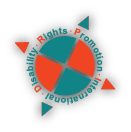Executive Summary
This project was developed by the Convention Coalition to provide advice and information to the New Zealand Government, to enable the formulation and implementation of practical and appropriate disability policy, in partnership with disabled New Zealanders. A variety of methods were employed to gather information, including data analysis and a range of consultation styles.
This summary briefly examines key themes from the consultations, the conversations with media representatives and the analysis of various media outlets, regarding disability-related content.
Chapter one looks at the nature of reporting across print, radio, and television relating to disabled people and disability issues in New Zealand. More specifically, it undertakes a wide-ranging analysis of how the media portrayed disabled people and disability issues in 2012.
This was done by analysing the content of the four major daily newspapers online and a case study of television and radio coverage of the Mojo Mathers parliamentary funding issue and the London Paralympics, respectively. This in-depth analysis of 518 items examined media reporting in terms of, for example, type of story/programme, story placement, who were the voices speaking in disability-related stories, what were the highest profile issues for disabled people and also the cross-cutting topics that mattered for disabled people in media stories.
Crucially, the analysis looked at the various frameworks that media outlets used to report on disability issues during the year, namely, the medical, charitable, heroic or superhuman, and rights-based frameworks. It also analysed any belittling or derogatory language used to describe disability by media outlets. The analysis found that the frameworks used relating to disability in media coverage were mainly charitable, heroic/superhuman or medical based, although there was a significant minority of rights-based coverage. Another critical factor is the absence of disabled people’s voices in media stories about them and their issues.
It was disappointing to note, within the sample stories surveyed, a striking absence of coverage on issues relating to Maori, Pasefika and other ethnic group disabled people.
Chapter two details the findings of interviews with 12 New Zealand media representatives. These representatives came from the media of print, television and radio, and from all over Aotearoa New Zealand.
The purpose of conducting the interviews was to explore what these media representatives understood about disability issues, and in particular, their knowledge (if any) of the various models of disability, namely, the medical, charitable, heroic/superhuman and rights-based approaches. The interviews provided an illustration of how the various media representatives (and by extension the wider media) approach disability issues. In other words, how do they approach story selection with respect to disability issues? Do they consult with disabled people and Disabled People’s Organisations or over disability issues? What is their understanding of the Convention? Overall, what do they believe their responsibilities are when it comes to reporting or commenting on disability-related stories?
The media representatives interviewed noted that while there were no specific policies on how to approach reporting on disability within their organisations, there were some general guidelines relating to language. Interviewees showed a confused attitude to reporting on disability issues, especially when it came to matters such as, for example, whether or not to emphasise a person’s impairment in stories. However, media representatives strongly defended the role of charitable and heroic/superhuman stories in disability terms. These personalities displayed, at best, a minimal understanding of the various models of disability as well as about the Convention and the role of Disabled People’s Organisations. The chapter also illustrates that they rarely consult with Disabled People’s Organisations or disabled people themselves on disability-related stories. Some of the media representatives noted that they had not undergone disability responsiveness training prior to commencing their journalistic careers.
Chapter three features feedback from three consultation meetings and the results of an online survey. A total of 102 disabled people took part in the various consultation mechanisms. Contributors represented a cross-section of people with a range of impairments. Quotes from these people are used liberally throughout the community consultation section of the chapter.
Participants in both the consultation meetings and online survey expressed the view that the media can be a powerful tool for advocating the rights of disabled people. It was therefore felt to be particularly frustrating that journalists continue to demonstrate a general lack of disability awareness and responsiveness.
Medicalisation and negative language feature strongly in stories about disability issues. Many people noted that disabled people tend to be portrayed as either pitiful victims or super-beings. Participants also spoke of a tendency to report a distorted view of impairment in television stories broadcast as part of charity collection weeks. When asked if they had heard or read a disability-related media story that made them feel uncomfortable, 92.7% of online survey respondents answered yes. Conversely, 59.6% could recall examples of outstanding journalism. It was felt that disabled people should feature more in mainstream media stories.
While the need for journalistic freedom and balance is recognised, the media, in turn, needs to ensure that the voices of disabled people are heard more in stories that are either about us or our issues. As this report amply demonstrates, New Zealand has a long way to go before disabled people can say that our authentic voices are being heard, in relation to mainstream issues and those that directly concern us.
Objective one of the New Zealand Disability Strategy calls upon all New Zealanders to “Encourage and educate for a non-disabling society”. Furthermore, the strategy idealises a society which “ … respects and highly values the lives of disabled people and supports inclusive communities.” The New Zealand media could play an active role in furthering these endeavours. How the media should do so is the challenge presented by this report.
